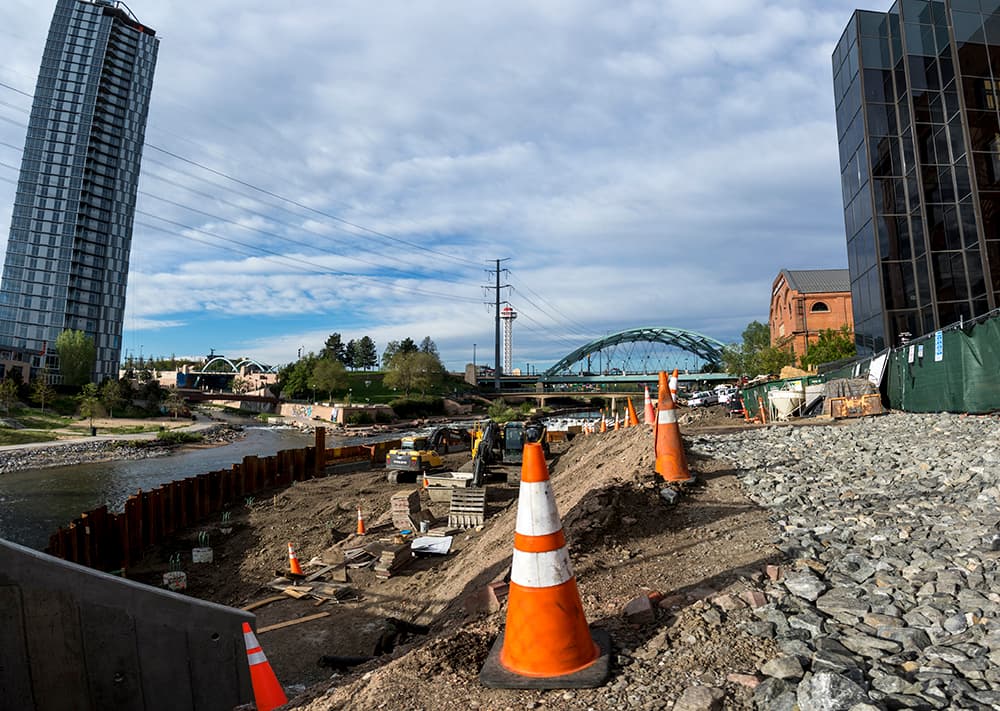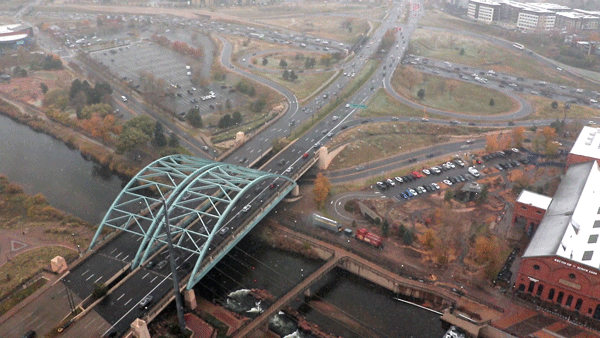Hot weather means we're looking for a place to swim, and unfortunately, that still doesn't include the South Platte River through Denver.
If you go to the Confluence on any given hot day, you may see people wading into the water. The city doesn't recommend it, but there's no firm ban that's enforced. Recently we got a reader question about why the river through the city is still polluted.

The city did not meet its goal to make the South Platte safely swimmable by 2020.
In 2013, when Mayor Michael Hancock launched the city's Office of Sustainability, he had set the goal to make the South Platte and the rest of the city's rivers swimmable and fishable by the end of the decade.
But the city told us that despite massive investments, the water has not become markedly safer for people to wade in.
"We've been monitoring the water quality for years and E. coli levels, they really haven't changed, despite everything that this city has done," said Jon Novick, who manages the Denver health department's water quality monitoring programs.
It's not for lack of trying. "Major upgrades at the major wastewater utilities on the South Platte have done a lot to limit the flow of various toxicants and environmental contaminants into the river," said Alan Vajda, an associate professor of environmental toxicology at the University of Colorado Denver who has done academic research on the South Platte going back to 2001.
The problems facing the river go back more than half a century, and have been exacerbated by climate change.
Just as in cities across the country, Novick said for a long time, the South Platte was essentially treated like a dump.
"There's kind of this legacy of just considering the river to have little value," he said. "Everything that was built had its back to the river."
As that attitude has shifted over the past couple of decades, and the city has invested heavily in improving the ecosystem, the water, and the green spaces around it, the challenges to cleaning up the river have gotten more substantial, according to Vajda.
He said as climate change makes the river warmer, and reduces the flow in the river, harmful things can thrive. At the same time, more people in Denver has also meant more contaminants flowing into the river from surface water runoff. Big storms, like the ones brought on by climate change, also mean more untreated stuff flows into the river.

"Drought, climate change, increased water usage, growing populations are all going to exacerbate the hazards of microbes," he said.
Vajda said lots of work is going on to improve the ecosystem and mitigate contamination, but, "It's just a question of whether the resources are there to keep up with the growing challenges of population and climate change."
The city no longer has an explicit goal to make the river swimmable.
Instead, Novick said, he hopes the city's goals to make Denver more livable - with more green spaces, for example, and to make the river more resilient to big storms - will ultimately lead to water that's safe enough to recreate in (that is, if there's enough water left for something like a paddleboard, given climate change).
Novick points out there are things Denverites can do to help the city clean things up. Since surface water runoff is a big problem, disposing of animal waste, human waste, fertilizers, and pesticides in safe ways can keep them out of the water.
Novick does not recommend you get into the South Platte in Denver at this point. But he said if you do really want to get in, or if your children or dog get in, there are some things you can do to reduce your chances of getting sick afterwards. Wash your hands after touching the water, especially before you eat or drink anything, stay away from standing water, and wait a few days after a storm, so that the system can flush through anything that the storm washes into the river.
A better option, if you're looking for a safe, outdoor place to swim, is a reservoir, Vajda advises. Reservoirs and swim beaches, "will close when there are reported and measurable levels of hazards such as harmful algal blooms, or shut down proactively when there is a measured E. coli hazard, rather than basing it upon your own smell test or visual." He added, "Not all risks are visible."











